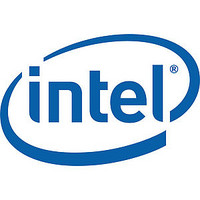lxt971a Intel Corporation, lxt971a Datasheet - Page 26

lxt971a
Manufacturer Part Number
lxt971a
Description
3.3v Dual-speed Fast Ethernet Phy Transceiver
Manufacturer
Intel Corporation
Datasheet
1.LXT971A.pdf
(90 pages)
Available stocks
Company
Part Number
Manufacturer
Quantity
Price
Part Number:
lxt971a1CA4
Manufacturer:
INTERSIL
Quantity:
20 000
Company:
Part Number:
lxt971a8EA4
Manufacturer:
Intel
Quantity:
28
Company:
Part Number:
lxt971aBC
Manufacturer:
CORTINA
Quantity:
41
Company:
Part Number:
lxt971aBE
Manufacturer:
INTEL
Quantity:
10
Company:
Part Number:
lxt971aLC
Manufacturer:
CORTINA
Quantity:
4 143
Company:
Part Number:
lxt971aLC
Manufacturer:
INTEL
Quantity:
399
Part Number:
lxt971aLC
Manufacturer:
INTEL
Quantity:
20 000
Part Number:
lxt971aLC A4
Manufacturer:
LEVELONE
Quantity:
20 000
Part Number:
lxt971aLC.A4
Manufacturer:
INTEL
Quantity:
20 000
Part Number:
lxt971aLCAC
Manufacturer:
INTEL
Quantity:
20 000
LXT971A 3.3V Dual-Speed Fast Ethernet Transceiver
3.3
3.3.1
3.3.2
3.3.2.1
3.3.2.2
3.4
3.4.1
26
Operating Requirements
Power Requirements
The LXT971A requires three power supply inputs (VCCD, VCCA, and VCCIO). The digital and
analog circuits require 3.3V supplies (VCCD and VCCA). These inputs may be supplied from a
single source. Each supply input must be de-coupled to ground.
An additional supply may be used for the MII (VCCIO). The supply may be either +2.5V or
+3.3V. Also, the inputs on the MII interface are tolerant to 5V signals from the controller on the
other side of the MII interface. Refer to
As a matter of good practice, these supplies should be as clean as possible.
Clock Requirements
External Crystal/Oscillator
The LXT971A requires a reference clock input that is used to generate transmit signals and recover
receive signals. It may be provided by either of two methods: by connecting a crystal across the
oscillator pins (XI and XO), or by connecting an external clock source to pin XI. The connection of
a clock source to the XI pin requires the XO pin to be left open. A crystal-based clock is
recommended over a derived clock (i.e., PLL-based) to minimize transmit jitter. Refer to the
LXT971A/972A Design and Layout Guide for a list of recommended clock sources.
A crystal is typically used in NIC applications. An external 25 MHz clock source, rather than a
crystal, is frequently used in switch applications. Refer to
requirements.
MDIO Clock
The MII management channel (MDIO) also requires an external clock. The managed data clock
(MDC) speed is a maximum of 8 MHz. Refer to
Initialization
When the LXT971A is first powered on, reset, or encounters a link failure state, it checks the
MDIO register configuration bits to determine the line speed and operating conditions to use for
the network link. The configuration bits may be set by the Hardware Control or MDIO interface as
shown in
MDIO Control Mode
In the MDIO Control mode, the LXT971A reads the Hardware Control Interface pins to set the
initial (default) values of the MDIO registers. Once the initial values are set, bit control reverts to
the MDIO interface.
Figure
7.
Table 20 on page 57
Table 38 on page 69
Table 21 on page 57
for MII I/O characteristics.
for details.
Rev. Date: August 7, 2002
for clock timing
Document #: 249414
Revision #: 002
Datasheet












